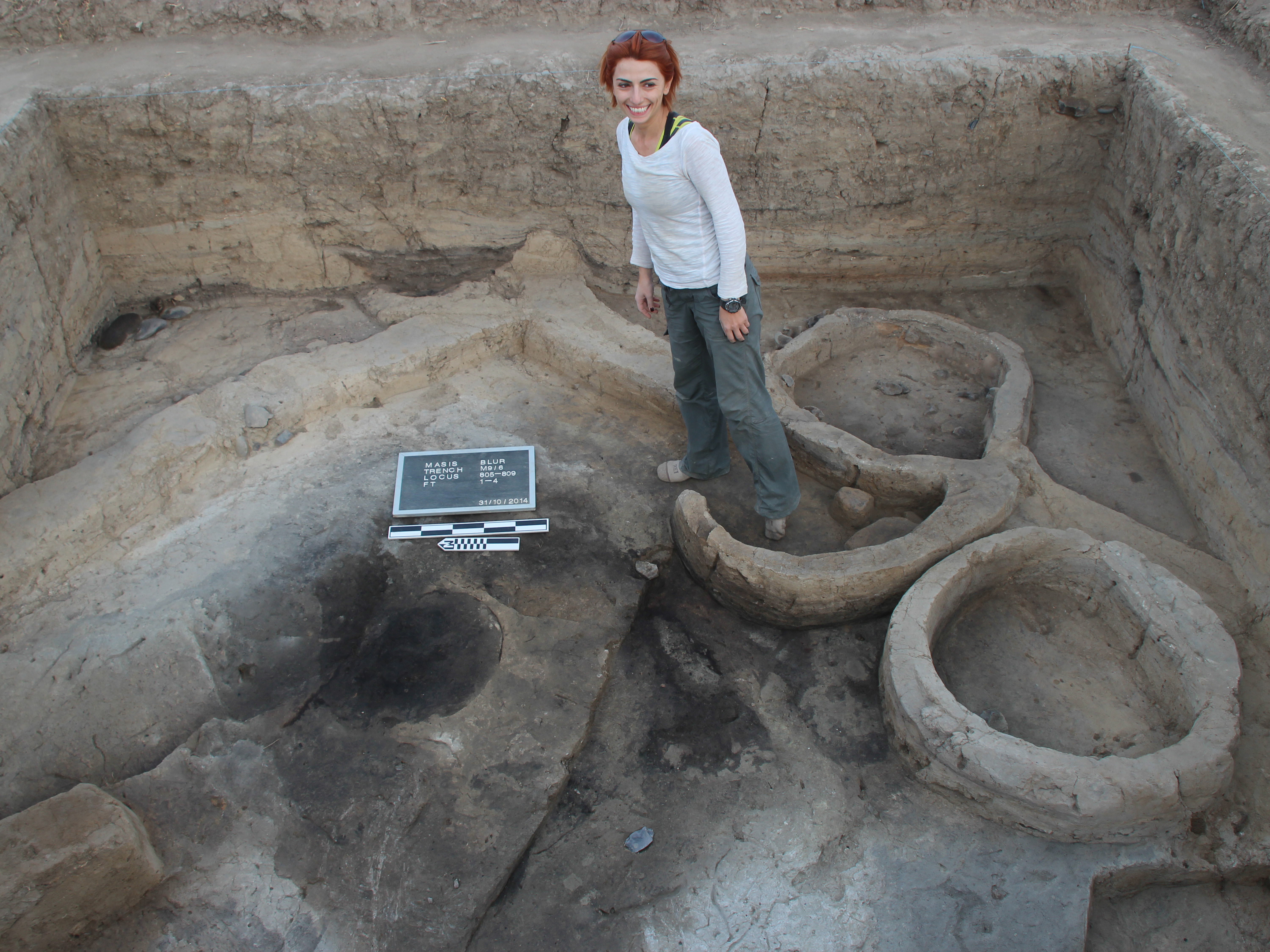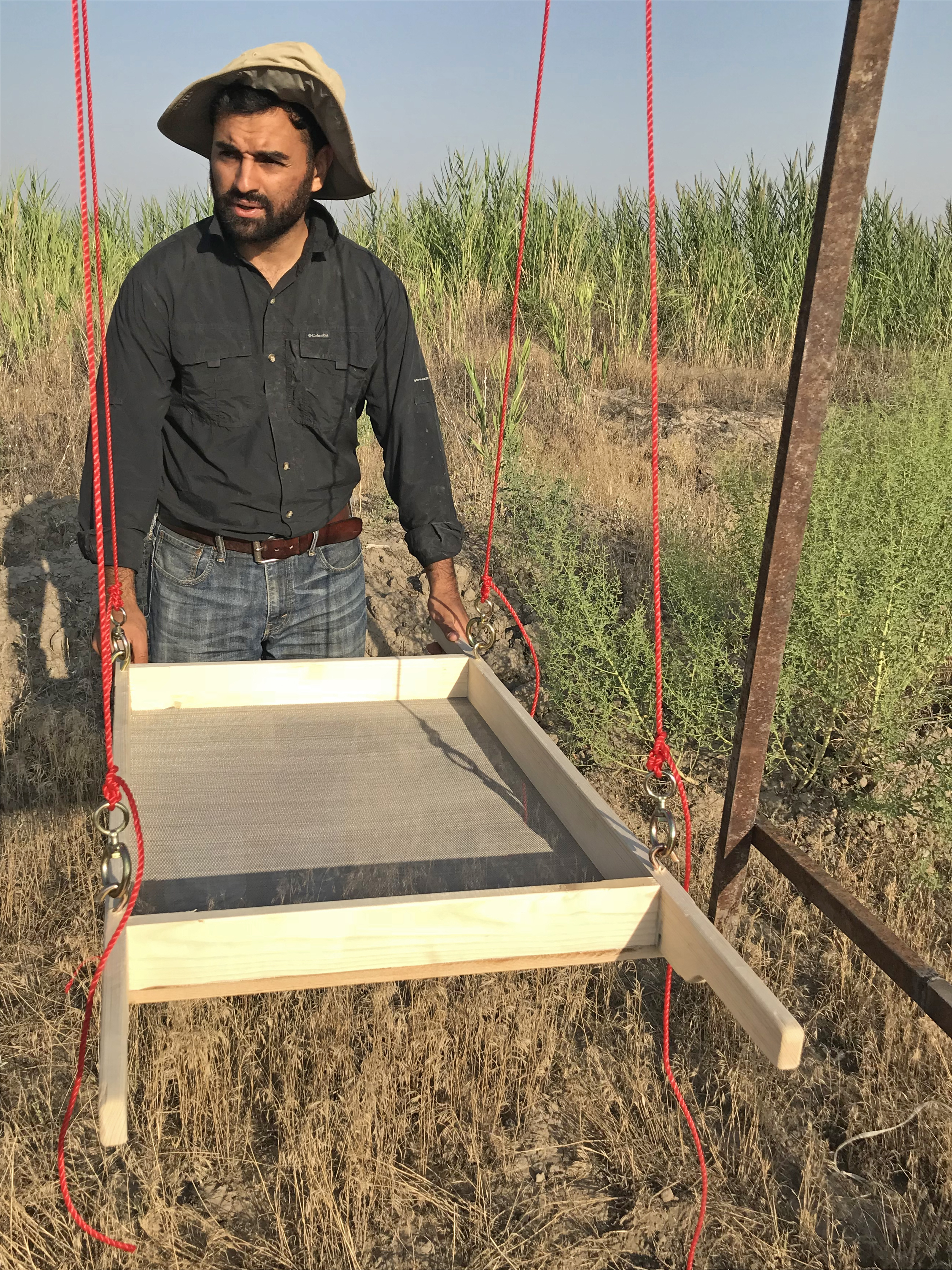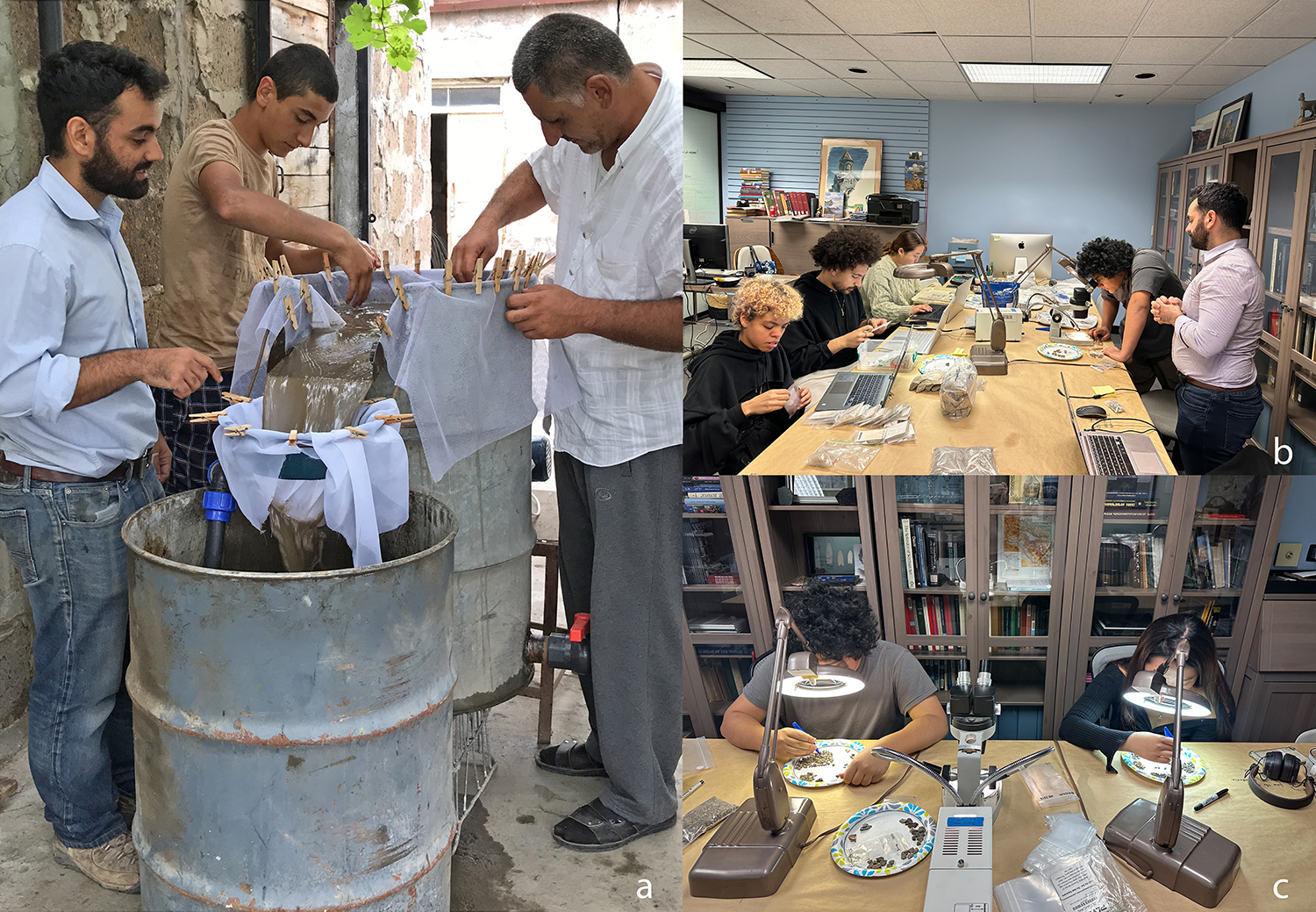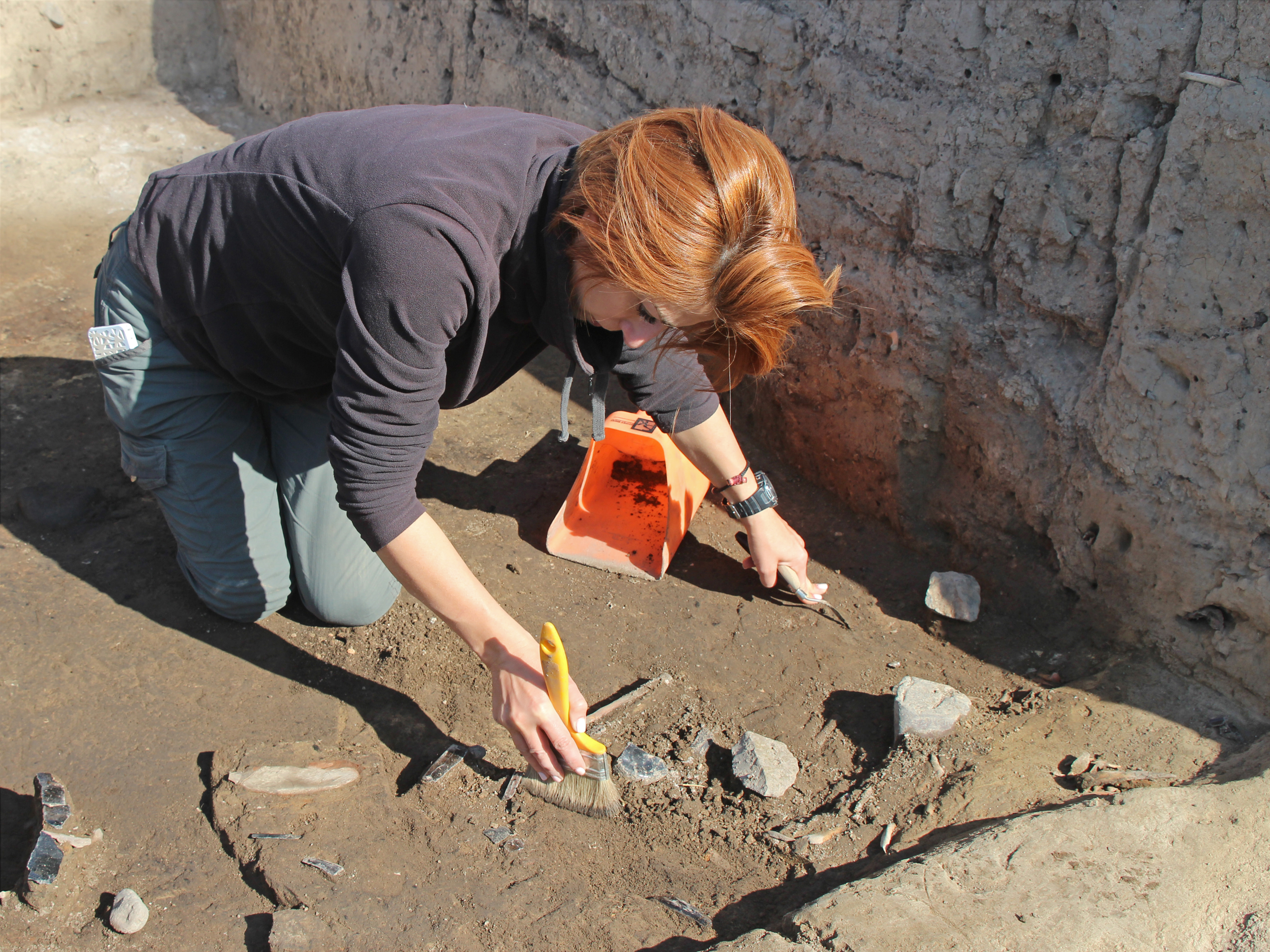Kristine Martirosyan-Olshansky Awarded AIA-NEH Grant
 Kristine Martirosyan-Olshansky has been awarded an AIA-NEH grant for her proposal “Space, Place, and Plants at Masis Blur, an early farming (Neolithic) site in Armenia.” Martirosyan-Olshansky is assistant researcher at the Cotsen Institute, director of the research program in Armenian Archaeology and Ethnography at UCLA, and co-director of the Masis Blur Archaeological Research Program (Armenia). The grant is only one of six or seven up to $15,000 that are awarded annually by the Archaeological Institute of America (AIA) for post-fieldwork research and publication preparation. The AIA-managed grant program is funded by the National Endowment for the Humanities (NEH).
Kristine Martirosyan-Olshansky has been awarded an AIA-NEH grant for her proposal “Space, Place, and Plants at Masis Blur, an early farming (Neolithic) site in Armenia.” Martirosyan-Olshansky is assistant researcher at the Cotsen Institute, director of the research program in Armenian Archaeology and Ethnography at UCLA, and co-director of the Masis Blur Archaeological Research Program (Armenia). The grant is only one of six or seven up to $15,000 that are awarded annually by the Archaeological Institute of America (AIA) for post-fieldwork research and publication preparation. The AIA-managed grant program is funded by the National Endowment for the Humanities (NEH).
 “This particular project is in collaboration with Alan Farahani, a former postdoctoral fellow at the Cotsen Institute from 2014 to 2018, who was instrumental in writing and securing the grant. The grant was awarded for the processing and analysis of archaeobotanical samples collected from excavation units M9/9 and M9/13 and to conceptualize these data spatially,” according to Martirosyan-Olshansky. “The biggest component of the work will be sorting what is called the heavy fraction from the site, which is part of the materials that we get from flotation,” she explained. Sediments are collected from specific features or specific contexts within the ancient settlement. They then go through a process called flotation, which is basically, “dumping a bucket of dirt in a barrel with an internal mesh and filled with water and letting the water do its thing. All the carbonized plant remains will float to the surface (the light fraction), and what sinks to the bottom is the heavy fraction. The latter is what we will process at UCLA. This includes animal bones, stone tool fragments, beads, minerals, and pigments (such as ocher). And of course a lot of sediment and tiny clay fragments.”
“This particular project is in collaboration with Alan Farahani, a former postdoctoral fellow at the Cotsen Institute from 2014 to 2018, who was instrumental in writing and securing the grant. The grant was awarded for the processing and analysis of archaeobotanical samples collected from excavation units M9/9 and M9/13 and to conceptualize these data spatially,” according to Martirosyan-Olshansky. “The biggest component of the work will be sorting what is called the heavy fraction from the site, which is part of the materials that we get from flotation,” she explained. Sediments are collected from specific features or specific contexts within the ancient settlement. They then go through a process called flotation, which is basically, “dumping a bucket of dirt in a barrel with an internal mesh and filled with water and letting the water do its thing. All the carbonized plant remains will float to the surface (the light fraction), and what sinks to the bottom is the heavy fraction. The latter is what we will process at UCLA. This includes animal bones, stone tool fragments, beads, minerals, and pigments (such as ocher). And of course a lot of sediment and tiny clay fragments.”
She pointed out that she currently, “has an army of undergraduate student volunteers in the laboratory who are helping sort through everything. They are separating all the materials into distinct categories, which will then be analyzed by specialists. With the grant, we will be able to employ four students to assist us with the project,” she continued. “The students will help to count, weigh, and enter the data into our existing relational database, built by Alan, all with the associated contextual information. They will also help us finalize the digital, three-dimensional photogrammetric models of these two excavation units. This part of the research will utilize GIS, in which existing drone and orthomosaic imagery can be georeferenced and placed into our excavation grid. All this will enable us to get a more detailed understanding of where and in what frequencies various artifacts occur across the site. This, in turn, will tell us more about the use of space at the site. The results of the archaeobotanical remains will provide a detailed view of how the early farmers of the Ararat Plain adopted non-local plants, such as wheat and barley, into their subsistence practices,” Martirosyan-Olshansky explained.

She added that the questions that they are trying to answer at these sites are the same as for the larger project. “How did the inhabitants of this Neolithic settlement go about their day-to-day activities? For example, where was the grain processed? Was the cooking area the same as the butchering area? Was there a specialized place for toolmaking? Going through these materials, we will map them onto the site plan. We will be looking at densities of certain types of artifacts that appear more frequently in certain parts of the site to tell us how that area was used.” They are also looking at broader questions, such as to what extent and in what ways did the local populations interact with groups living in the neighboring regions? How did these Neolithic communities become less mobile and decide to take up farming? Once they did live in more permanent architecture, which of the cultivated plants did they use more often than others, and why?
 The Masis Blur Archaeological Project is a multi-year project investigating how the first farming communities were established on the Ararat Plain in Armenia about 8000 years ago. “We started the project in 2012 and the chipped-stone industry at the site formed the basis of my dissertation research,” Martirosyan-Olshansky continued. Each year she spends approximately four to six weeks at the site. “We have had five excavation seasons since 2012, and even though we are a very small project, we have had significant results and have been able to add missing information to our knowledge of the Late Neolithic in the Ararat Plain. For example, we excavated one of the few known burials from the South Caucasus dated to the Late Neolithic period, which became part of a large research project ultimately published in Science. We have also identified, for the first time, direct evidence of a coiled basket, as well as pigment processing on a relatively large scale,” she added.
The Masis Blur Archaeological Project is a multi-year project investigating how the first farming communities were established on the Ararat Plain in Armenia about 8000 years ago. “We started the project in 2012 and the chipped-stone industry at the site formed the basis of my dissertation research,” Martirosyan-Olshansky continued. Each year she spends approximately four to six weeks at the site. “We have had five excavation seasons since 2012, and even though we are a very small project, we have had significant results and have been able to add missing information to our knowledge of the Late Neolithic in the Ararat Plain. For example, we excavated one of the few known burials from the South Caucasus dated to the Late Neolithic period, which became part of a large research project ultimately published in Science. We have also identified, for the first time, direct evidence of a coiled basket, as well as pigment processing on a relatively large scale,” she added.
Captions to the figures
Figure 1. Kristine Martirosyan-Olshansky prepares a trench at Masis Blur for photography.
Figure 2. Alan Farahani tests the new sieve set up near the Masis Blur Neolithic settlement on the Ararat plain in Armenia.
Figure 3. (a) Alan Farahani (left), Armen Sargsyan (center), and Georgi Sargsyan (right) build the flotation device to process the archaeological sediments collected at Masis Blur. (b) Alan Farahani trains undergraduate student volunteers Shaolin Lee, Fahad Bagdadi, Taylor Han, and Aidan Choi (left to right) in processing of heavy fraction samples collected from Masis Blur. (c) Undergraduate student volunteers Aidan Choi (left) and Taylor Han (right) sort the heavy fraction collected during the 2018 field season at Masis Blur.
Figure 4. Kristine Martirosyan-Olshansky excavates an array of tools and animal bones left in situ at Masis Blur.
Published on March 16, 2023.


